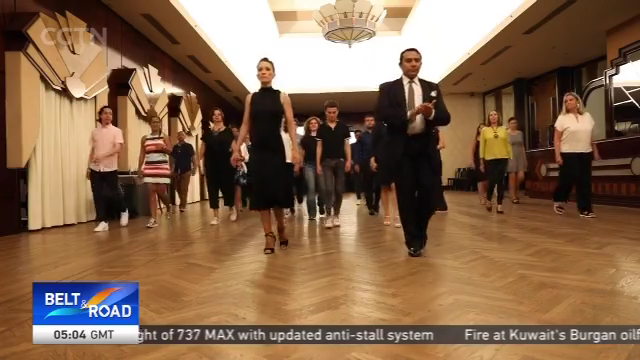
14:24, 18-Apr-2019
Tango in Argentina: A cultural heritage that's spread across the world
Updated
14:20, 21-Apr-2019
03:10

If you were asked to name one thing from Argentina, what springs to mind? Lionel Messi? Diego Maradona? All have become synonymous with the South American country and so too has Tango. Originating from the working classes of Buenos Aires in the 19th century, Tango is a genre of music and ballroom dance that's since spread all over the world. CGTN's Xu Zhaoqun shares his experience of Tango in the Argentine capital.
Sexy steps with unexpected rhythms, you can't miss tango when you visit Buenos Aires. Shows are available on every evening of the week in the city. The dance is also something the local people are very proud about. However, the dance a hundred years ago looked different from what is today seen in ballrooms.
Nowadays, the original tango style can be seen in the small restaurants or clubs along the streets of the port area. Like many other traditions, tango is also facing challenges from the popularity of modern dance. Fortunately, there's still a younger generation fond of tradition.
VALENTINA BELIZÁN, STUDENT BUENOS AIRES "So many young people like us like Tango very much, and people who're older than us may not have been particularly interested in tango before, but more and more are into it now, and even some universities now have classes to teach tango."
MARTÍN OJEDA CASAS, DANCE TEACHER BUENOS AIRES "A lot of foreigners come here to learn dancing. Many people from all over the world keep coming to Argentina because of tango, for them, tango represents Argentina."
Foreigners can easily join short training courses in Buenos Aires to satisfy their curiosity, but formal training courses are usually expensive.
ALEJANDRA MARTIÑAN, DANCE TEACHER BUENOS AIRES "We'd been teaching tango in China before, and now many business and government agencies in China invite us to perform tango. The first time that I went to China to perform tango was 1998."
Today, tango is included on the UNESCO Intangible Cultural Heritage List. And its uniqueness continues to attract the eyes of visitors to the South American country and it will likely continue to remain popular both in Argentina and across the world. Xu Zhaoqun, CGTN, BUENOS AIRES.

SITEMAP
Copyright © 2018 CGTN. Beijing ICP prepared NO.16065310-3
Copyright © 2018 CGTN. Beijing ICP prepared NO.16065310-3